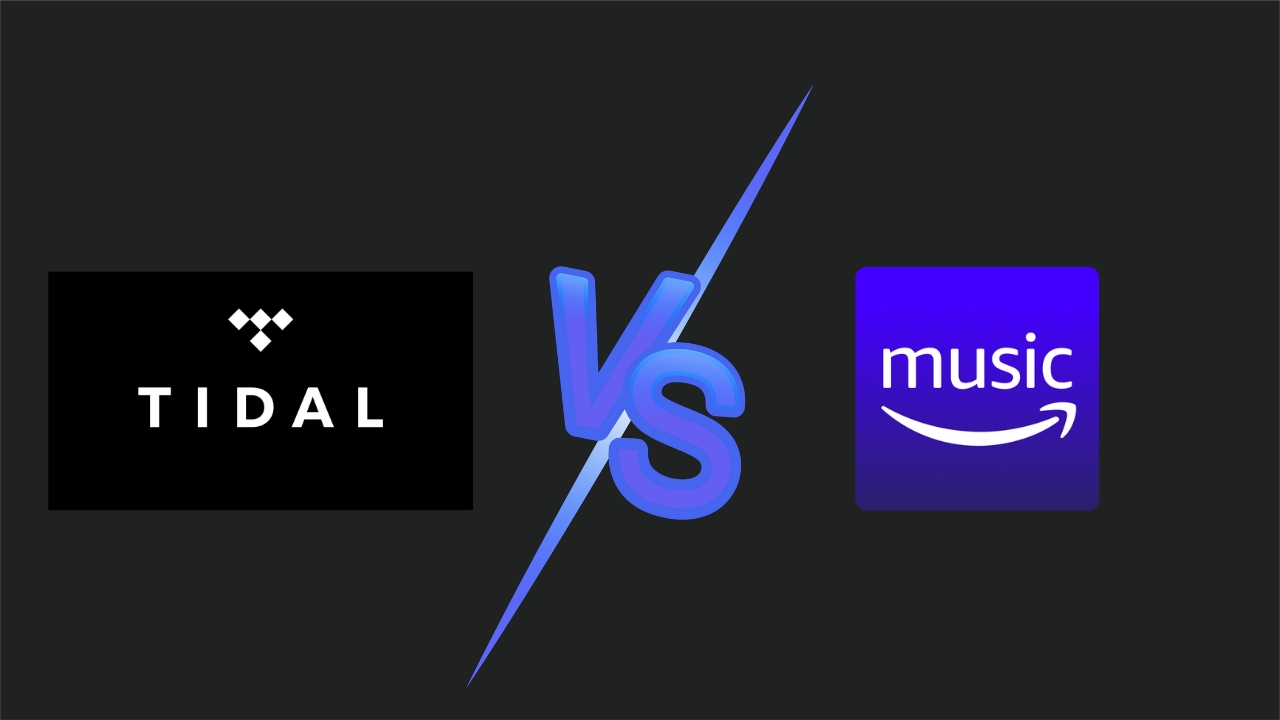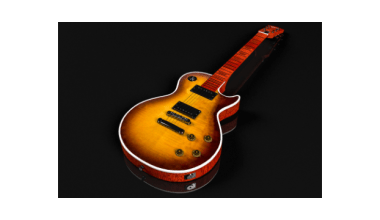In the world of digital music, two major players often come up in discussions: Amazon Music vs Tidal. Both offer extensive libraries, unique features, and cater to different listeners. However, choosing between Amazon Music vs Tidal can be challenging. This comparison will help you understand the strengths and weaknesses of each service, so you can make an informed decision that suits your needs.
What is Amazon Music?
Amazon Music is part of Amazon’s vast ecosystem. Launched in 2007, it has become a popular music streaming service with millions of users. The service offers several tiers: Amazon Music Free, Amazon Music Prime, Amazon Music Unlimited, and Amazon Music HD. Each tier provides different levels of access and features, from basic streaming with ads to high-definition audio.
In the Amazon Music vs Tidal debate, a key factor to consider is Amazon Music’s integration with other Amazon services. This makes it convenient for those who are already using Amazon products.
What is Tidal?
On the other side of the Amazon Music vs Tidal debate is Tidal. Launched in 2014, Tidal is known for its high-fidelity sound quality. Unlike many other streaming services, Tidal focuses on providing lossless audio, making it a favorite among audiophiles. Tidal offers two main tiers: Tidal Premium and Tidal HiFi. The latter provides CD-quality and master-quality tracks.
Tidal also stands out for its strong artist relationships. The platform offers exclusive content and early releases from top musicians. This artist-centric approach makes Tidal a preferred choice for those who value supporting artists directly.
Music Library and Content Availability
When comparing the content libraries of Amazon Music vs Tidal, both platforms offer extensive catalogs, but with some differences.
Amazon Music provides over 75 million songs across various genres, including pop, rock, classical, and indie. The platform also offers podcasts, curated playlists, and radio stations. Amazon Music frequently updates its catalog to ensure users have access to the latest releases.
Tidal also offers over 70 million songs and more than 250,000 high-quality music videos. This is something that sets Tidal apart in the Amazon Music vs Tidal comparison. Tidal is also known for its exclusive content, including early album releases and artist-curated playlists. For those who value exclusive content, Tidal offers a unique advantage.
Verdict: In the battle of Amazon Music vs Tidal, both services provide vast music libraries. However, Tidal’s exclusive content and music videos give it a unique edge.
Sound Quality: The Audiophile’s Perspective
Sound quality is a crucial factor in the Amazon Music vs Tidal comparison, especially for audiophiles.
Tidal is renowned for its high-fidelity sound. With Tidal Premium, users can stream music at 320 kbps. Tidal HiFi offers a significant upgrade, streaming at 1411 kbps using the FLAC codec. This lossless audio quality provides an experience close to listening to original studio recordings. Tidal also offers Master Quality Authenticated (MQA) tracks, which offer even higher resolution.
Amazon Music also provides high-quality streaming, particularly with Amazon Music HD. This service offers over 70 million songs in HD quality (up to 850 kbps) and millions in Ultra HD (up to 3730 kbps). Amazon Music HD also features 3D audio formats like Dolby Atmos and Sony 360 Reality Audio, adding another layer of immersion.
Verdict: In the Amazon Music vs Tidal debate, Tidal’s HiFi and MQA tracks make it the winner for sound quality. However, Amazon Music HD is a strong contender with its HD and Ultra HD tracks.
User Interface and Experience
The user interface is a crucial aspect in the Amazon Music vs Tidal comparison, as it can greatly affect your experience.
Amazon Music features a clean interface that integrates well with other Amazon services, like Alexa. The app is available on iOS, Android, and desktop, making it accessible wherever you are. While easy to use, some users find the interface cluttered with promotions and suggestions.
Tidal offers a sleek and minimalist design that emphasizes the music. The app is visually appealing and easy to navigate. Tidal also features a dark mode, which is popular among users who prefer a more subdued look.
Verdict: In the Amazon Music vs Tidal interface comparison, Tidal’s clean, music-focused design stands out. However, Amazon Music offers better integration with other services, appealing to those invested in the Amazon ecosystem.
Music Discovery and Personalization
For many users, discovering new music is a critical factor in the Amazon Music vs Tidal decision.
Amazon Music uses advanced algorithms to suggest songs, playlists, and stations based on your listening habits. The service also integrates with Alexa, allowing users to discover music through voice commands by asking for songs by mood, genre, or activity.
Tidal focuses on human-curated content. The service offers playlists created by artists and music experts. Tidal Rising, a feature dedicated to promoting up-and-coming artists, is popular among users who enjoy discovering new music. Additionally, Tidal’s Mixes feature provides personalized playlists based on your listening history.
Verdict: In the Amazon Music vs Tidal music discovery comparison, Amazon Music excels with its algorithms and Alexa integration. However, Tidal offers a more curated experience, ideal for users who prefer expert-crafted playlists.
Device Compatibility
Device compatibility is another important consideration in the Amazon Music vs Tidal comparison.
Amazon Music works with a wide range of devices, including smartphones, tablets, smart TVs, and game consoles. The service integrates seamlessly with Amazon’s devices, such as Echo and Fire TV. The app is available on iOS, Android, and desktop, ensuring you can listen to your music wherever you are.
Tidal supports a variety of devices, including mobile devices, desktops, smart TVs, and connected devices like Sonos and Bluesound. Tidal’s app is compatible with both Android and iOS, and it integrates with third-party apps like Plex and Roon.
Verdict: Both Amazon Music vs Tidal offer extensive device compatibility. Amazon Music has an edge for users in the Amazon ecosystem due to its seamless integration with Amazon devices.
Exclusive Content and Features
When discussing Amazon Music vs Tidal, exclusive content is a significant factor.
Amazon Music offers some exclusive content, including original playlists and early access to new releases for Prime members. However, exclusive content isn’t Amazon Music’s main focus.
Tidal places a strong emphasis on exclusive content and features. The service is known for its artist partnerships, offering early access to albums, exclusive releases, and unique content like live streams. Tidal’s “Tidal X” initiative brings artists and fans closer through live events and exclusive experiences. Tidal’s commitment to supporting artists is reflected in its higher payout rates compared to other streaming services.
Verdict: In the Amazon Music vs Tidal comparison, Tidal is the winner for exclusive content and artist support. Amazon Music offers some exclusives, but Tidal’s focus on unique content gives it an advantage.
Offline Listening and Data Usage
Both Amazon Music and Tidal offer offline listening, which is essential for saving data or listening without an internet connection.
Amazon Music allows users to download songs, albums, and playlists for offline listening. The process is straightforward, and your music is available offline once downloaded.
Tidal also offers offline listening for both Tidal Premium and Tidal HiFi users. Tidal’s ability to offer offline MQA tracks ensures that you can maintain top-tier sound quality even when offline.
Both services allow you to adjust streaming quality to conserve data. Amazon Music offers standard, high, and best quality options, while Tidal provides normal, high, and HiFi quality streaming.
Verdict: In the Amazon Music vs Tidal offline listening comparison, both services perform well. Tidal’s offline MQA tracks offer an advantage for those who prioritize sound quality.
Integration with Other Services
Integration with other services is important, especially for those already invested in specific ecosystems.
Amazon Music integrates seamlessly with Amazon’s services. You can control Amazon Music with voice commands through Alexa, making it easy to play songs, albums, or playlists just by asking. This integration is especially convenient for those who use Amazon devices like Echo or Fire TV. The service is also accessible through Amazon’s Fire tablets and other products, ensuring a cohesive experience across all Amazon devices.
Tidal also integrates well with various services and devices. While it doesn’t have the same depth of integration as Amazon Music with Amazon products, Tidal works smoothly with several third-party platforms. These include Plex, Roon, and Sonos, which are popular among users with high-end audio setups. Tidal’s integration with these platforms makes it a strong choice for those who value premium audio experiences and have invested in high-quality sound systems.
Verdict: In the Amazon Music vs Tidal integration comparison, Amazon Music is better suited for those deeply invested in the Amazon ecosystem due to its seamless integration with Amazon devices and services. However, Tidal excels for users focused on premium audio setups and third-party platform compatibility.
Family and Student Plans
Both Amazon Music and Tidal offer family and student plans, making their services more accessible to a wider audience.
Amazon Music provides a family plan under Amazon Music Unlimited, allowing up to six family members to have individual accounts. Each member can enjoy their own playlists, recommendations, and settings under one subscription. This plan is cost-effective for families and offers significant savings compared to individual subscriptions. Amazon Music also offers a student plan with a discount, making it an affordable option for students.
Tidal offers similar plans. The family plan is available for both Tidal Premium and Tidal HiFi, allowing up to six accounts under one subscription. Each account is personalized, with its own music preferences and playlists. Tidal also provides a student plan that offers discounts on both its Premium and HiFi subscriptions, making high-quality sound accessible to students on a budget.
Verdict: In the Amazon Music vs Tidal comparison for family and student plans, both services offer excellent options. Amazon Music may be more appealing to those already using Amazon services, while Tidal offers strong value for those who prioritize superior sound quality.
Customer Support and Reliability
Customer support and service reliability are critical factors when choosing between Amazon Music vs Tidal.
Amazon Music benefits from Amazon’s extensive customer support network. Users can reach out via phone, email, or chat for assistance. Additionally, Amazon’s robust infrastructure ensures that the service is reliable, with minimal downtime or disruptions. The extensive support resources and detailed FAQs available on Amazon’s website further enhance the user experience.
Tidal also offers solid customer support, with options to contact their team via email or social media. While Tidal’s customer support is generally responsive, it may not be as comprehensive as Amazon’s. However, Tidal’s platform is stable and reliable, with minimal service interruptions, which is crucial for users who rely on it for high-quality streaming.
Verdict: In the Amazon Music vs Tidal comparison for customer support and reliability, Amazon Music has a slight edge due to Amazon’s extensive support network and infrastructure. However, Tidal still offers reliable service and responsive customer support.
Which One Should You Choose?
After exploring the key aspects of Amazon Music vs Tidal, the choice ultimately depends on your preferences and priorities.
- Choose Amazon Music if you are an Amazon Prime member and want seamless integration with Amazon devices. Amazon Music offers a broad music library, flexible pricing, and solid sound quality, making it a great all-around option for most users.
- Choose Tidal if you are an audiophile who values the highest possible sound quality and exclusive content. Tidal’s focus on lossless audio, artist support, and unique features makes it ideal for those who want the best listening experience and a closer connection with the music and artists they love.
Final Thoughts
In the rapidly changing world of music streaming, both Amazon Music vs Tidal stand out for their unique strengths. Amazon Music provides a vast library, excellent integration with other Amazon services, and flexible pricing that appeals to a broad audience. On the other hand, Tidal is the go-to choice for those who prioritize sound quality and exclusive content.
Ultimately, the choice between Amazon Music vs Tidal depends on what matters most to you. Whether you value the convenience and integration of Amazon Music or the superior sound quality and exclusives offered by Tidal, both platforms deliver excellent music streaming experiences. Consider your needs and preferences, and choose the service that aligns best with how you want to enjoy your music.
For further reading, explore these related articles:
- How to Make a VEVO Music Video: A Step-by-Step Guide for Artists
- Understanding Music Charts & Insights: A Guide for Aspiring Musicians
- The Power of Playlist Push Curators: Boost Your Music Career
For additional resources on music marketing and distribution, visit Deliver My Tune.






